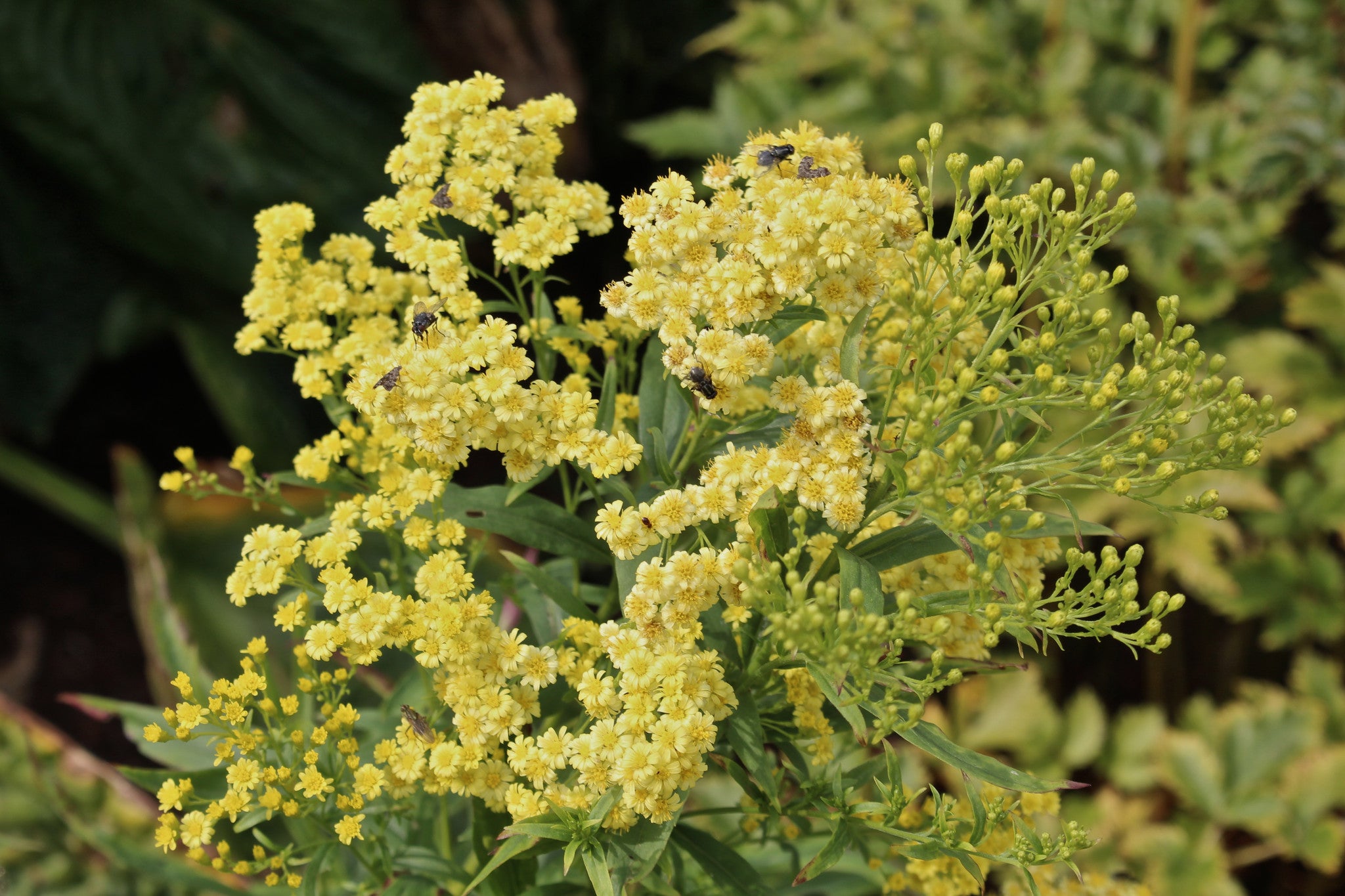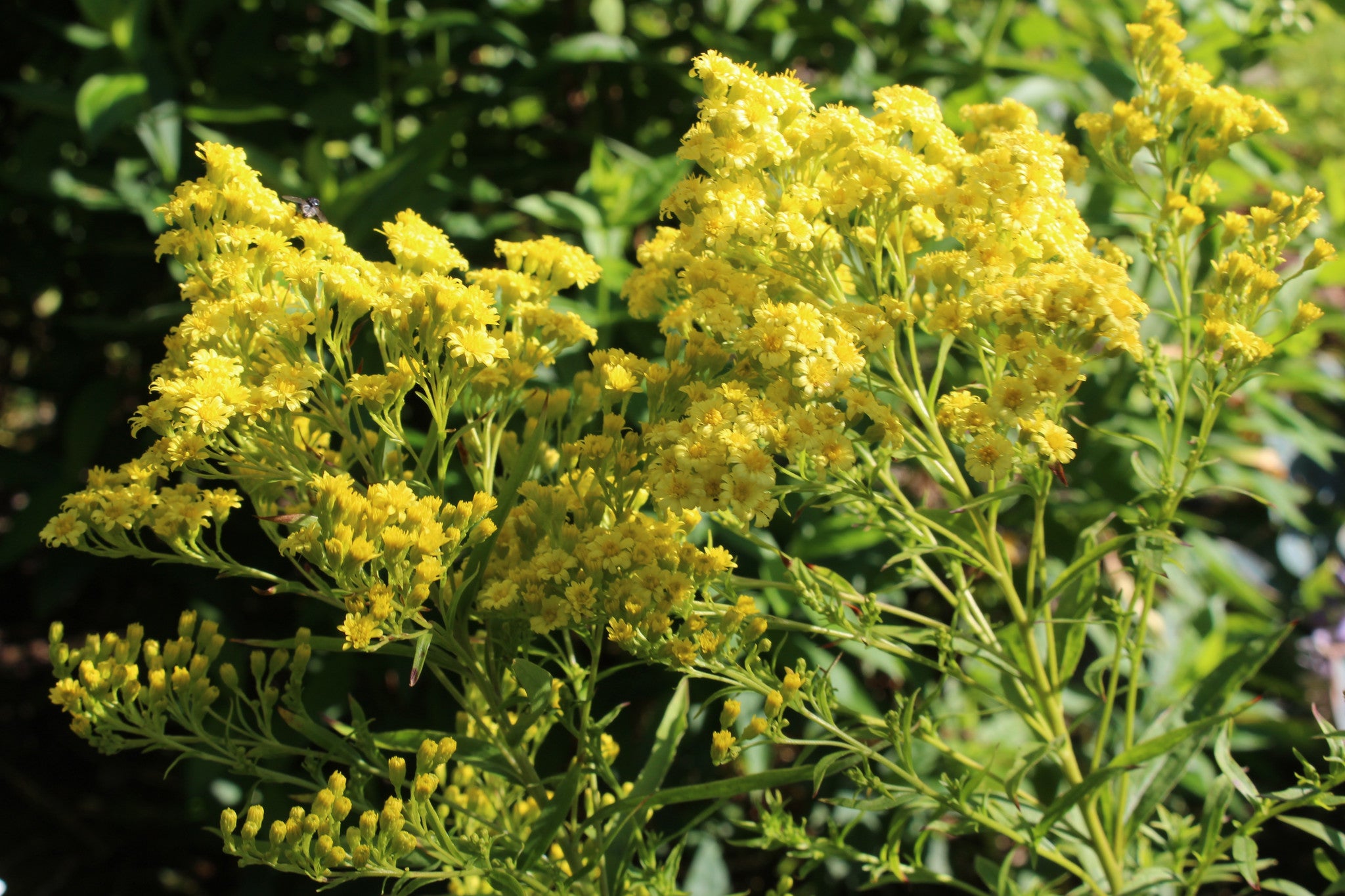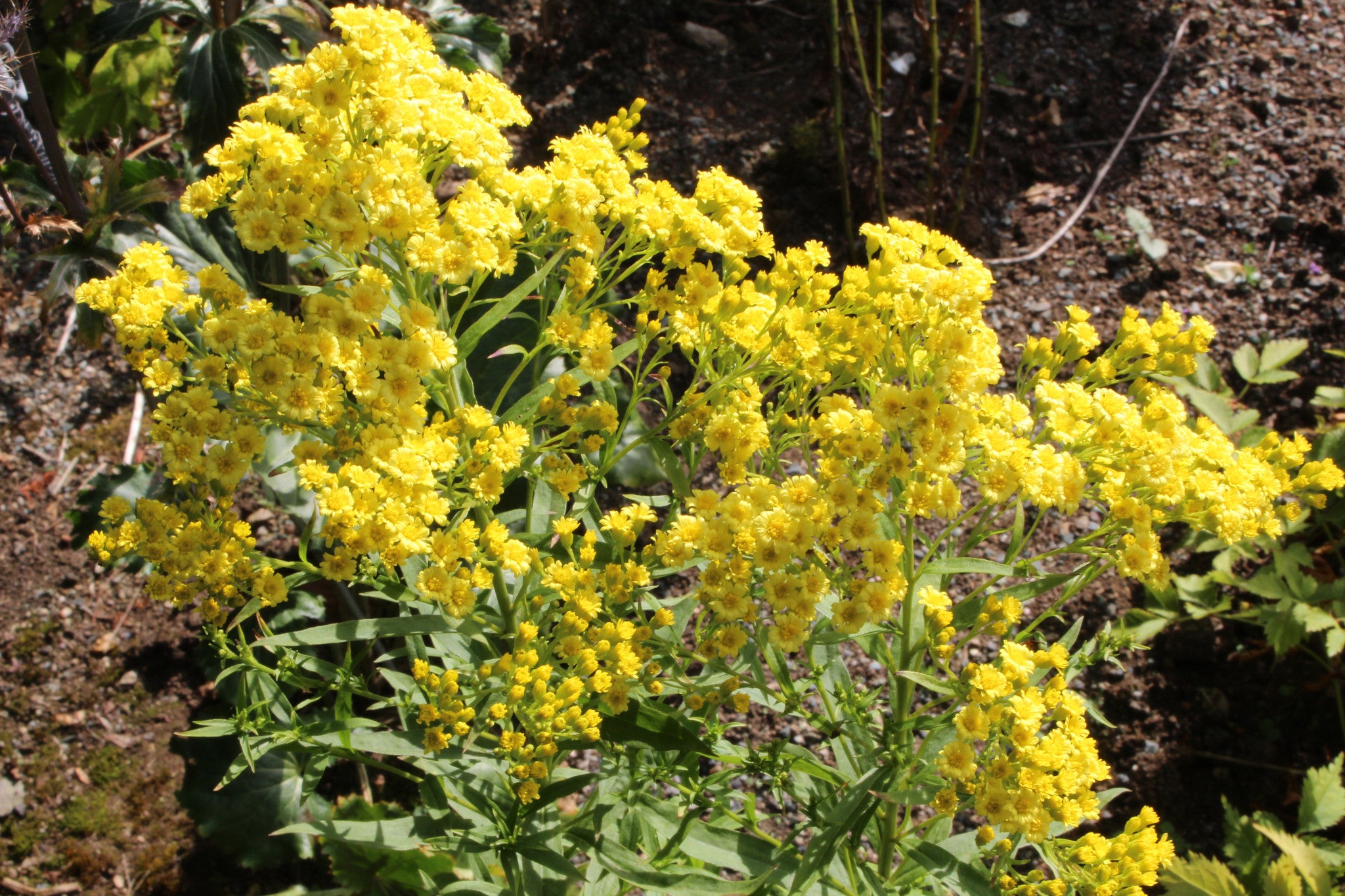Solidago x luteus 'Lemore'
Approx. 0.5 litre pot
About this cultivar:
Solidago x luteus 'Lemore' is a shorter in height, paler-lemon flowering, cultivar of the Solidago x luteus species (formerly know as a genus Solidaster). The species is a 1910 cross between Aster ptarmicoides and Solidago canadensis from the Leonard Lille Nursery in Lyon, France. The large clusters of tiny golden flowers make a nice filler plant in the garden and the cut flowers last a long time and dry well. The Aster genes give a lower, more controlled growth habit and larger flowers. The Solidago genes give it a golden colour and profuse flower clusters.
- Position: Full sun, partial shade
- Soil: Almost any soil, grows well in Ballyrobert
- Flowers: July, August, September
- Other features: Cut Flowers or Dried Flowers, Bees and Butterflies, Grows well in Ballyrobert
- Hardiness: Fully hardy, grows well in Ballyrobert
- Habit: Clump forming
- Foliage: Deciduous
- Height: 45 - 75 cm (1.5 - 2.5 ft)
- Spread: 15 - 45 cm (0.5 - 1.5 ft)
- Time to full growth: 2 to 5 years
- Plant type: Herbaceous Perennial
- Colour: Green, yellow
- Goes well with: -
About this genus:
Solidago (sol-id-a-go), commonly called goldenrod, is a genus of about 100 to 120 species of flowering plants in the daisy family,(Asteraceae). It gets it names from the latin word solido, to make whole or to heal, in reference to supposed healing properties. Most are herbaceous perennial species found in open areas such as meadows, prairies, and savannas. They are mostly native to North America, including Mexico; a few species are native to South America and Eurasia.
Thomas Edison experimented with goldenrod to produce rubber, which it contains naturally. It might not be surprising then to know that Native Americans seemed to use it as some sort of medicinal chewing gum! Solidago is the state flower of Kentucky, Nebraska, and South Carolina. With that kind of political endorsement, surely your garden deserves a goldenrod plant as well?
Solidago species have long been dismissed as garden subjects due to the misconception that they caused hay fever and can be invasive. There are both good and bad goldenrods. Solidago canadensis has been declared a noxious weed in many countries for its aggressive running habit. S. rugosa, S. stricta and others are much better behaved and have been hybridized in Europe for decades for the cut flower market. The cultivars we have are easy. Almost any soil that isn't waterlogged, or any situation that is not in full shade. Enjoy!






